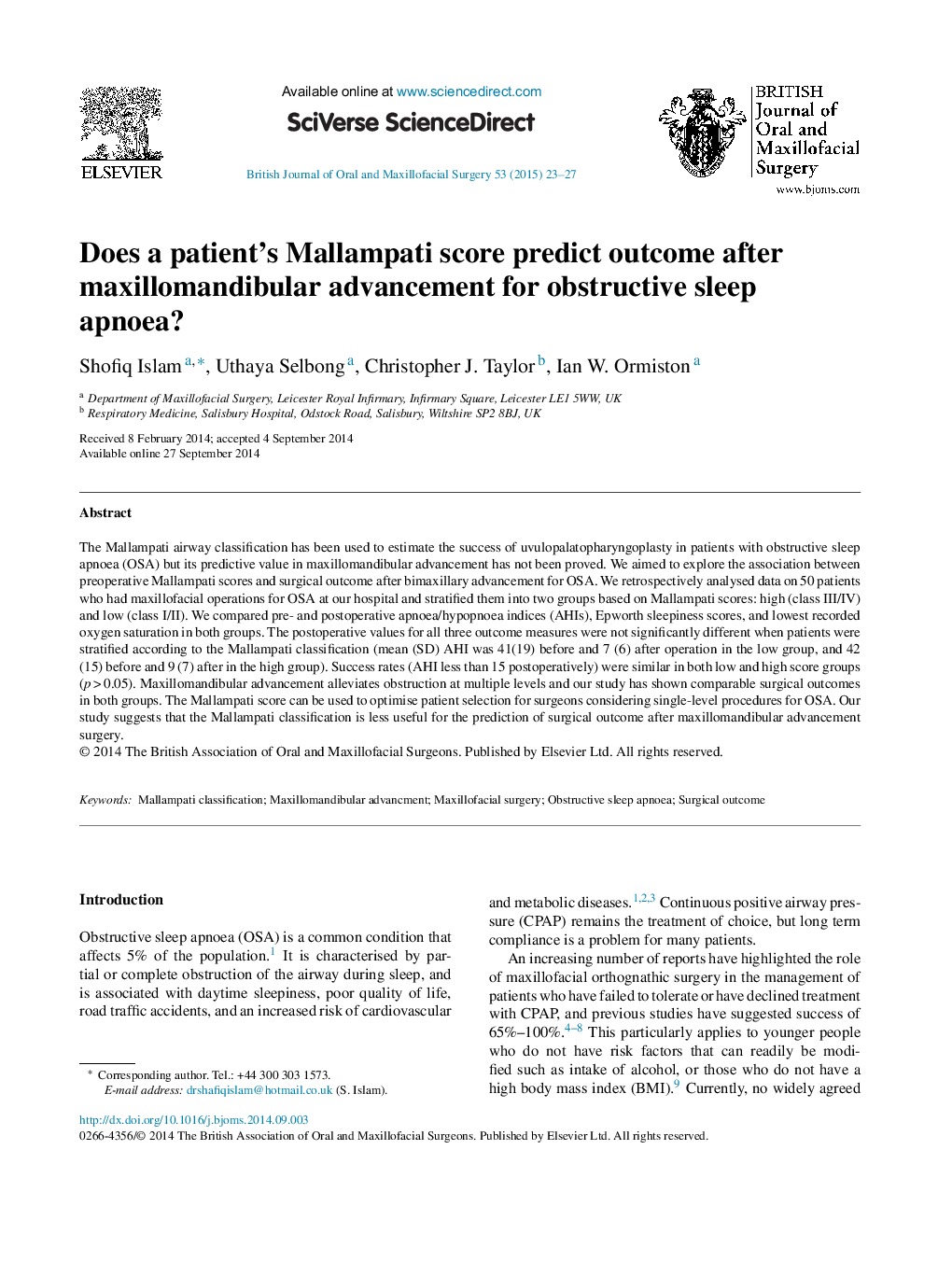| Article ID | Journal | Published Year | Pages | File Type |
|---|---|---|---|---|
| 6052122 | British Journal of Oral and Maxillofacial Surgery | 2015 | 5 Pages |
The Mallampati airway classification has been used to estimate the success of uvulopalatopharyngoplasty in patients with obstructive sleep apnoea (OSA) but its predictive value in maxillomandibular advancement has not been proved. We aimed to explore the association between preoperative Mallampati scores and surgical outcome after bimaxillary advancement for OSA. We retrospectively analysed data on 50 patients who had maxillofacial operations for OSA at our hospital and stratified them into two groups based on Mallampati scores: high (class III/IV) and low (class I/II). We compared pre- and postoperative apnoea/hypopnoea indices (AHIs), Epworth sleepiness scores, and lowest recorded oxygen saturation in both groups. The postoperative values for all three outcome measures were not significantly different when patients were stratified according to the Mallampati classification (mean (SD) AHI was 41(19) before and 7 (6) after operation in the low group, and 42 (15) before and 9 (7) after in the high group). Success rates (AHI less than 15 postoperatively) were similar in both low and high score groups (p > 0.05). Maxillomandibular advancement alleviates obstruction at multiple levels and our study has shown comparable surgical outcomes in both groups. The Mallampati score can be used to optimise patient selection for surgeons considering single-level procedures for OSA. Our study suggests that the Mallampati classification is less useful for the prediction of surgical outcome after maxillomandibular advancement surgery.
